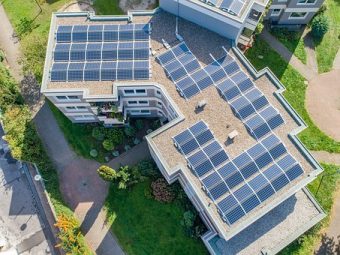
More than a hundred years have passed since the discovery of the photovoltaic effect – the way of converting solar energy into electricity, and the first solar panels were produced only in 1958 for the needs of space satellites. With the development of technology, solar energy has gained importance in the last two decades.
Solar panels produced by Luxor Solar, the leading company in the number of sold solar modules in our market, are installed in over 85 countries around the world. The company’s production capacity was 1,200 MWp in 2021, while 4.2 GW is expected by the end of 2022. We talked about Luxor Solar products with Nino Sijerić, Business Development Manager of this renowned company.
EP: The German company Luxor Solar is a certified manufacturer of solar modules with over 15 years of experience. What else can you tell us about the company?
Nino Sijerić: Luxor Solar has been manufacturing solar modules since 2007, and we have been a recognizable brand in the region for over a decade. This year we received the certificate “TOP PV BRAND Serbia, Slovenia, North Macedonia, Bosnia and Herzegovina, and Greece”. This certificate confirms the company’s outstanding contribution to developing the mentioned markets.
In focus:
EP: Your customers have a rich portfolio of solar panels at their disposal that can meet their different needs. What modules do you produce, and which model is the most sought after?
Nino Sijerić: Our standard products are monocrystalline solar panels with a half-cell architecture, most often with M6 cells with a diagonal of 166 mm and rated power of 380 Wp and 450/455 Wp and M10 with a diagonal of 182 mm with a rated power of 410/415 in dimensions of 1,722 mm × 1,134 mm × 30 mm, and then like their “big brother” 540, 545 and 550 Wp dimensions 2,279 mm × 1,134 × 35 mm. I would especially highlight the bifacial version of the 540 Wp BIF for larger rooftop and ground projects.
EP: When will you have higher power panels on offer, around 650Wp?
Nino Sijerić: It is already possible to order 660 Wp with M12 cells or a diagonal of 210 mm and a half-cell architecture measuring 2,384 mm × 1,303 mm × 35 mm and 34 kg in weight. This model is primarily suitable for large power plants, and I recommend it for that purpose.
EP: We are witnessing that companies are increasingly interested in solar energy, but also individual households that are trying to reduce their electricity bills. Which panels would you recommend to them? Can the panels recommended for installation on the ground be used for industrial halls in terms of size and weight?
Nino Sijerić: Each project is distinct and very individual, so the most important thing is to have a reliable designer who can optimally use individual parameters in a particular location. For private homes, I recommend the modules with the highest efficiency and the longest possible warranty – 410/415 Wp and 380 Wp in the standard version or premium version, with a 30-year warranty.

EP: Solar energy technology is developing intensively, so bifacial or double-sided solar panels are increasingly present on the market. Who are these panels for, and what is the difference compared to monofacial modules? What is the maximum bifacial gain – the gain in effect due to the albedo effect (reflection on the surface)?
Nino Sijerić: With optimal reflection, i.e. max albedo, you can achieve up to 80 per cent front-side power and nominal power additionally (up to 95 per cent for heterojunction models). For example, 410 Bifacial modules are ideal wherever there is a base with the reflection of light for additional electricity production. So, on a roof and with a 10 cm distance from a tile or roof surface, you can expect 3 to 8 per cent higher production, and if the roof surface is light in color, then up to 11 per cent more. In general, users are increasingly choosing bifaciality because it does not cost much more in production, and the price difference is justified given the expected result. I will give an example from Germany, where a test was done by the independent institution “Tuv Sud Rheinland”. The modules were installed above the gravel at the height of 1.5 m, and the production increased by 11 per cent in one year.
Prepared by: Milica Markovic
Read the story in the new issue of the Energy portal Magazine RENEWABLE ENERGY SOURCES.



